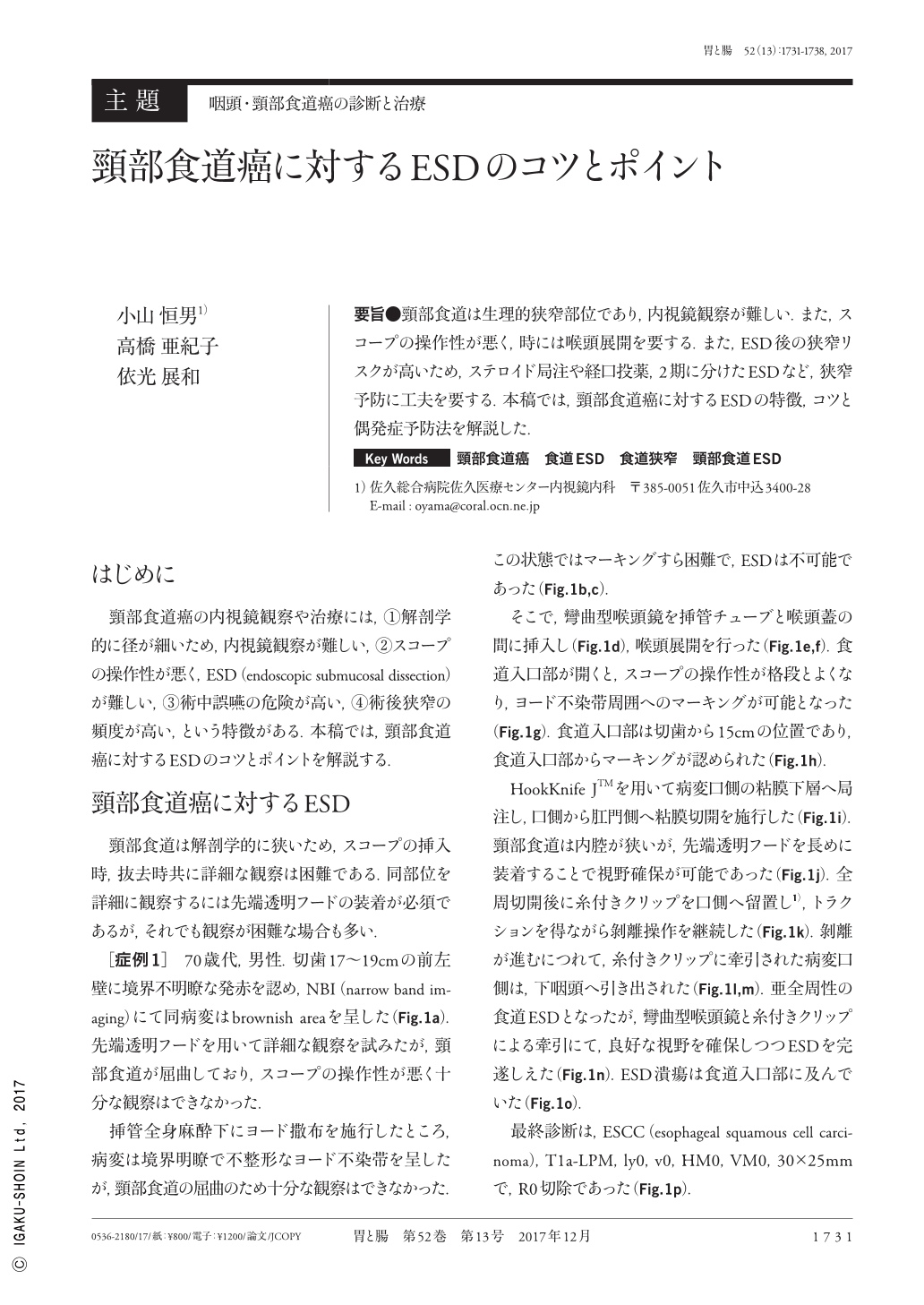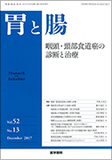Japanese
English
- 有料閲覧
- Abstract 文献概要
- 1ページ目 Look Inside
- 参考文献 Reference
要旨●頸部食道は生理的狭窄部位であり,内視鏡観察が難しい.また,スコープの操作性が悪く,時には喉頭展開を要する.また,ESD後の狭窄リスクが高いため,ステロイド局注や経口投薬,2期に分けたESDなど,狭窄予防に工夫を要する.本稿では,頸部食道癌に対するESDの特徴,コツと偶発症予防法を解説した.
Performing ESD(endoscopic submucosal dissection)on the Ce(cervical esophagus)is difficult owing to the narrow space and poor maneuverability in the Ce. However, a curved laryngoscopy can increase the effective working space, thus allowing for better ESD in the Ce.
There are several risk factors contributing to severe stricture following esophageal ESD. One such risk factor is the location within the Ce, which is largely due to the narrow diameter of the Ce. Some procedures, such as steroid injection or oral intake, have been reported to be effective for preventing severe stricture following semi-circumferential ESD. However, the effects are not sufficient for use in circumferential ESD, particularly in cervical esophageal ESD.
Here, we report on a method of ESD for CeSCC(cervical esophageal squamous cell carcinoma)and a complication of endoscopic balloon dilatation following circumferential ESD for CeSCC. Finally, we report on a case wherein 10 synchronous CeSCCs were performed and was then successfully treated with a two-step ESD without severe stricture. Thus, a two-step ESD may be a promising option for preventing severe stricture, particularly for cases with synchronous lesions. However, severe fibrosis arising from the first ESD may cause the mucosal incision and submucosal dissection in the second ESD to become more difficult. Therefore, such difficult ESDs should be performed only by expert endoscopists.

Copyright © 2017, Igaku-Shoin Ltd. All rights reserved.


